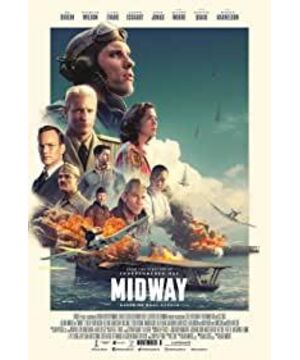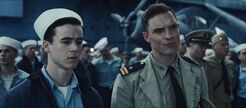First published on the public account "Shadow Detective" ID: ttyingtan
Weibo: Detective Inspector
Author: Inspector
Please indicate the source
At 10 o'clock in the morning on November 14th, Qingdao suddenly sounded the air defense alarm, which turned out to be a hot search.
It turned out that on November 14, 1897, German troops invaded Qingdao.
After 1998, on this day of each year, Qingdao will sound the air defense alarm.
Remember the history and don't forget the martyrs.
The inspector still remembered that on September 18th, Harbin sounded the air defense alarm. At that time, it was during military training. Some school instructors and students took off their hats in silence.
But I didn't expect that this time I saw someone suspected that the air defense alarm affected sleep...
The ancient Roman philosopher Cicero once said: A person who does not understand his own history is always a child.
But this does not mean that a person can always show off his ignorance like a child.
Recently, a movie costing more than US$100 million was released. Although it has many pitfalls and problems, its reputation has risen against it.
The inspector felt that this was related to the battle that changed human history, and the significance of this movie far exceeded its quality.
Today, the inspector just wants to use this movie to talk about this battle.
Perhaps you will understand after reading that air defense alarms are never noisy.
Battle of Midway
The Battle of Midway
>>>>Foreword-Anti-aircraft guns facing upward
On May 19, 1998, the center of the Pacific Ocean, which is more than 2,000 kilometers away from the nearest land.
Robert Ballard was ecstatic, and he finally saw an anti-aircraft gun still facing the sky at a depth of more than 5,000 meters.
It was him who discovered the wreck of the famous Titanic in 1985.
This time he found the American aircraft carrier Yorktown, which was sunk in the Battle of Midway in 1942 .
Veteran Bill Sergi was very excited, "I thank you, I represent all the crew on the Yorktown..." The old man was talking, but suddenly choked up.
No one thought that more than half a century later, this 74-year-old man would still choke silently when he thinks about the situation at the time...
>>>>Kill-revenge can be done at all costs!
All this must start in 1941. At the beginning of World War II, Japan expanded rapidly, burning, killing, looting and looting all the way.
Because of its opposition to Japan's aggressive actions, the United States interrupted its oil supply to Japan and frozen Japanese assets in its territory.
Japan decided to go to war against the United States.
Yamamoto Fifty-Six, then commander of the Japanese Joint Navy Fleet, was a gambler.
He decided to give the United States a fatal blow , forcing the Americans to sit down and negotiate.
On December 7, 1941, Japan dispatched more than 350 planes to attack Pearl Harbor.
In just 2 hours, 21 US warships were destroyed, nearly 2500 people were killed and at least 1178 were injured, while the Japanese casualties were less than 100.
After the successful attack by the Japanese army, the signal "Tiger! Tiger! Tiger!" was sent to the rear troops .
The United States was shocked, and the media reported at that time: This is a history that 140 million Americans will never forget.
The two waves of Japanese attacks destroyed American ships and aircraft. The third wave of attacks was supposed to destroy the docks and oil depots, but the Japanese turned their heads and ran away after the second wave of attacks.
Japan severely shed blood on the Americans, but retained his hematopoietic ability.
Coincidentally, Pearl Harbor was originally the base of three US aircraft carriers. But all three aircraft carriers were on patrol that day and were not in Hong Kong.
The Americans were completely angry.
The next day, Roosevelt delivered a speech, designating December 7 as "National Humiliation Day" and declared war on Japan.
The film reproduces Roosevelt’s classic speech on the radio: Yesterday, December 7, 1941. It's a day when we live in shame. The United States has been deliberately attacked by Japan... No matter how long it will take us to repel this premeditated aggression, the Americans are on the right side and will surely win a full victory!
However, Japan then swept Southeast Asia even more rampantly:
They then bombed the U.S. air base in the Philippines, invaded the British colonies in Burma and Malaya for rubber, and seized the Dutch colonies in Sumatra for oil...
So far, Japan has controlled most of the battlefield in the Pacific.
Two weeks after the Pearl Harbor incident, Roosevelt proposed to give Japan a vengeance and counterattack. He wanted to retaliate by air strikes on the Japanese mainland.
But all the officers present were repeating three words to him: impossible.
However, Roosevelt was firm. He emphasized: We must use the most hate-free method, and revenge can be done at all costs!
>>>>Broken——As long as it is a person, it is the goal
Forty-five days after the Pearl Harbor incident, Doolittle received a call from the commander-in-chief of the US Army Air Force.
He was appointed a top-secret dangerous mission. At that time, there were no more than eight people in the United States who knew about the mission.
That year, he was 45 years old.
Doolittle stands only 167cm, he is a dwarf version of Han Solo (the legendary "Star Wars" Millennium Falcon driver with only 12 seconds to finish the gap Ke Sheer routes) .
He was a genius pilot of the U.S. National Treasure Class at the time.
At the age of 26, he flew across the United States alone within 12 hours, a record that no one has broken for many years.
During World War I, the U.S. military even ordered that Du Lite must not be sent to the front, and he must be left behind to train pilots.
The reason why he was named this time is because of the revenge plan that Roosevelt said at all costs-the air raid on Tokyo.
Obviously, all the "impossibility" are carried on the shoulders of this "short": Japan's defense range at the time was 500-600 nautical miles, and no aircraft had such a long range.
Even if the aircraft carrier carries the aircraft close to the Japanese mainland, it must take off as far as possible, otherwise the aircraft carrier will become a living target of Japan.
Doolittle plans to let the aircraft carrier carry the B25 long-range bomber, which is unprecedented in the history of aviation .
The take-off distance on a single aircraft carrier is as short as only one-fifth of the normal, not to mention the need to fill the aircraft with fuel and hang bombs...
This task is simply a dream, but the morale of the people and soldiers of the United States and the entire Allied Powers was low at that time, and people desperately needed some kind of victory to see hope.
68 days later, under pressure, Doolittle led his secretly trained subordinates and 16 modified bombers on board the aircraft carrier.
After boarding the aircraft carrier, the pilots found that the crew were dumbfounded, and no one knew where the aircraft carrier was going.
These pilots were even more confused, because Du Lite never told them what the intensive training was for.
On April 16, the aircraft carrier of the Hornet changed to a radio silent state, and Du Lite told the pilots that they were going to bomb Tokyo.
At this time, it was less than 48 hours before the mission started.
The pilots were emotional, but they also had to be informed of the risk factor of the mission:
Taking off on an aircraft carrier without falling into the sea is the first line of life and death, and crossing the Japanese defensive circle is the second line of life and death. After the bombing , it is the third line to land safely in the Chinese theater (the aircraft carrier returns immediately after takeoff, so the aircraft can only retreat Landed in the Chinese theater)...
In short, the probability of them returning home safely is almost zero.
Even so, what these young people have on their faces, in addition to despair and death, is more of a certain kind of joy.
Someone also wrote on the bomb:
This is only the beginning.
Doolittle selected 80 people from a hundred volunteers.
On April 18th, due to the discovery by the Japanese army, this unrequited mission was forced to start ahead of schedule.
At 8 o'clock in the morning on April 18.
They have to take off early, which means that the plane may run out of fuel before arriving in China.
Doolittle drove the first B25 bomber to take off from the Hornet. Due to the headwind, the aircraft trembled and disappeared below the deck. With his superb skills, Dolittle successfully pulled the aircraft up.
This thrilling picture is also presented in the film.
After flying close to the sea for two hours at a low altitude, they arrived in the sky over Tokyo, which was clear at this time.
In just 30 seconds, they bombed military targets such as factories, railways, and airports, and then quickly evacuated.
When the bombing began, Tokyo did not even sound the air defense alarm.
The bombing was not very devastating, but it caused a sensation. It was like a slap in the face of the Japanese, and it was just over 4 months since the Pearl Harbor incident.
The entire United States was excited about it, and the soldiers on the battlefield were full of enthusiasm when they heard the exciting news.
However, no one knew whether the Doolittle team was alive or dead.
Among the 16 bombers, except for one that landed in Vladivostok, the other 14 all fell in the rainy night in Jiangxi, Zhejiang, China.
Due to the need for confidentiality, China has no idea about the bombing , let alone the arrival of Du Lite.
Chinese villagers found the team members.
Under completely unfamiliar and language barriers, the villagers put dry clothes on the drenched and injured team members, gave them water and food, helped them search for their lost teammates, and secretly transferred them to the hospital.
This made Du Lite and his party come to an end, and moved them even more.
When the Japanese were insulted, they cast their anger on the Chinese.
They frantically searched for Americans in Zhejiang and Jiangxi and threatened to kill all the Chinese who helped these people.
This scene was also shown in the movie. Du Lite found that the Japanese army was bombing everywhere, so he asked the villagers what was the goal of the Japanese?
And he also heard a shocking answer: As long as it is a person, it is a goal!
Under the rescue of his Chinese friends, Doolittle and his surviving comrades reunited.
Soong Meiling and her husband even held a grand celebration banquet for Du Lite after they learned about it.
Doolittle was transferred to Kunming and returned to the United States, where he became a hero.
In the 80-person team, except for 3 people who were executed by the Japanese and failed to parachute, 64 people survived.
Doolittle died in 1993 at the age of 96.
At his funeral, all U.S. B25 bombers that were still able to fly were lifted off as a token of condolences.
However, China paid a heavy price for helping the Doolittle team successfully evacuate.
Among them, American pilots recalled their experiences in China and said: The Japanese massacred the Chinese in this area, including women and children.
In the end, about 250,000 people were killed in Jiangxi, Zhejiang, China.
>>>>Wolf——Since then, I never fly again
In 1942, Edwin Leiden was 39 years old. He was the staff of the intelligence officer of the Pacific Fleet.
His team found that the code "AF" appeared frequently in the intercepted Japanese secret telegrams.
He guessed that "AF" is the next important target of the Japanese army, and it is likely to be Midway Island, because once Midway Island is lost, the west coast of the United States will be at the gunpoint of the Japanese army.
But he could not be sure.
In the previous Pearl Harbor incident, the intelligence department made mistakes.
Coupled with the just-concluded Coral Sea battle, although the United States repelled the Japanese onslaught, one aircraft carrier was destroyed and the other Yorktown was severely damaged.
The United States can no longer withstand another intelligence error.
So Leiden thought of a way. He sent a clear telegram stating that the fresh water distillation equipment on Midway Island was damaged and the troops on the island were in critical condition of water shortage.
The next day, Leiden intercepted Japanese secret electricity: AF lacks fresh water. Leiden determined that AF is Midway Island.
Nimitz, commander-in-chief of the Pacific Fleet, used Leiden's intelligence to persuade Roosevelt that he would receive strong support from the country to prepare for Midway Island.
However, this is still an extremely unfair battle.
In Nimitz's hands, there are only two aircraft carriers: Enterprise and Hornet.
The Yorktown had just been severely damaged in the Coral Island naval battle, and repairs would take at least 3 months.
Nimitz issued the death order to repair the Yorktown, and a miracle happened. After 1,500 crew members rushed to work day and night, only 72 hours, the Yorktown opened the dock.
At this time, the United States had three aircraft carriers, all of which were transferred to Midway Island, while Japan dispatched eight.
In Japan, the gambler Yamamoto Fifty-Six put all their bets on Midway Island. They assembled the largest force since the Meiji Restoration Army:
8 aircraft carriers, 206 warships, 600 aircraft (470 carrier-based aircraft), and 5000 Marines.
Moreover, the Japanese aircraft carrier battle group was already the most powerful aircraft carrier formation in the world at that time.
Not to mention Japan’s superior performance of the Type Zero fighter, just to compare the strength of the forces, the Japanese laughed at how the Americans might not dare to fight:
Aircraft carrier: 8:3 (Japan VS America, the same below) Battleship: 11:0 Number of aircraft that can be put in: 7:4
The confident and arrogant Japanese felt that they would surely be able to bury the U.S. army under the sea this time, and paid little attention to reconnaissance, and the U.S. had already learned the approximate location and time of the Japanese invasion.
But before the battle, the Japanese army temporarily replaced the codebook.
The American photographer John Ford was responsible for documenting the battle, and we were able to see some precious images.
In the movie, he was the one who shouted "Take me!" watching the bomb fall by his side .
On June 4, 1942, a U.S. reconnaissance plane captured the driving route of the Japanese army.
In the early hours of the next morning, 108 Japanese planes flew to Midway Island (36 fighters, attack planes, and bombers respectively) .
Four hours later, the plane flew to Midway Island. This scene was filmed by Ford.
Later, one of the bombs exploded next to Ford, and he was seriously injured and lost an eye.
The Japanese planes shot down all 15 American fighter planes that came to intercept and broke through the artillery circle, but they found that the airport on the island was empty.
They bombed Midway Island wildly, and almost destroyed all the buildings on the island.
However, the most dramatic thing happened.
When the first group of aircraft that attacked Midway returned home, they found that the sea was full of gunfire and thick smoke.
They couldn't find their own aircraft carrier.
In just 5 minutes, 3 aircraft carriers in Japan were sunk!
It turned out that after knowing the location of several Japanese aircraft carriers, the US ordered all aircraft on the three aircraft carriers to take off.
Even if they knew that the range was 200 nautical miles at this time (the effective attack range of the fighter was 150 nautical miles) , these aircraft would not be able to return after the bombing and had to make a forced landing.
All 154 U.S. fighter planes flew to the Japanese aircraft carrier.
At this time, the second wave of Japanese fighter planes had risen to the deck, with torpedoes hung up, ready to attack a possible American aircraft carrier.
After learning that Midway Island had no success, the Japanese asked the plane to dismantle the torpedoes and replace them with bombs in preparation for a second attack on Midway Island.
They never expected that a bunch of American bombers suddenly appeared in the clouds above their heads.
Among them, the US B17 bombers dropped bombs from an altitude of 20,000 feet, but none of them hit the Japanese ships.
Because of their inexperience, American bombers carried out low-altitude and small-angle bombings on Japan. They had already been shot down for most of them before they got close to the aircraft carrier.
The torpedo bombers that took off from the Hornet were all shot down by anti-aircraft artillery, and only one survived.
In addition, the torpedo bombers that took off from the Enterprise and Yorktown also failed to hit the Japanese ships, and only six returned safely.
Although the Japanese successfully defended against these attacks, there was a mess on the deck of their aircraft carrier.
The aircraft that had just been replaced with bombs and was preparing to attack Midway Island again needs to be replaced with torpedoes in an emergency, and then attack the US aircraft carrier instead.
Torpedoes and bombs are all over the ground, and there is no time to take any safety measures.
Some of the first wave of fighters that hit the island in the middle of the attack had already returned, waiting for refueling, but they had nowhere to land.
At this moment, the devastating 5 minutes came.
The American dive bombers hidden in the clouds roared down, and 500-1000 pound bombs rained down.
This historic 5 minutes was perfectly presented by "The Battle of Midway", making people sweaty palms.
These dive bombers plunged straight into the Japanese aircraft carrier from the air at an angle close to right angles (45°-90°) .
There is no radar or sighting system on the aircraft, and the pilot is required to approach the target as low as possible.
The closer you are to death, the closer you are to success.
In the rain of bullets, every pilot dived with his life.
After dropping the bomb, they need to stick to the sea and pull the plane up...
10:20 minutes. Three bombs hit the Japanese aircraft carrier Kaga, ignited the fuel tank, and detonated the bomb.
The Kaga instantly burned into a sea volcano.
10:24 minutes. Three fearless dive bombers pounced on the Akagi aircraft carrier, two bombs exploded between the stacked planes, and the pilot who was about to take off was burned alive in the cockpit.
10:25 minutes. The Canglong aircraft carrier was hit by three bombs, and the flames burst into the sky.
The US was also violently attacked by the Japanese army, and the newly repaired Yorktown was completely sunk by torpedoes.
Three kinds of image comparison:
In just 5 minutes, three Japanese aircraft carriers were destroyed. This is unprecedented in human history, and there is no one to come after.
Japan's Flying Dragon was also hit hard in the afternoon and sank the next day.
Within one day, with the loss of 4 aircraft carriers, Japan suffered its first defeat since World War II, and this was their worst defeat in 300 years.
In the Battle of Midway, Japan completely lost its control of the sea and lost the Pacific battlefield. This war has also heralded the fall of the Japanese Empire.
In this battle, Japan lost 4 aircraft carriers, 253 aircraft and 3,500 soldiers.
The US lost 1 aircraft carrier, 1 cruiser, 147 aircraft and 307 soldiers.
The pilot named Dick Best in the movie actually hit the two Japanese aircraft carriers Akagi and Hiryu in reality and caused them to sink.
But he did quickly retired because of inhalation of alkaline gas, and then he went in and out of the hospital for 4 years because of tuberculosis.
"Since then, I have never flew again," Best told his friend later.
During the Battle of Midway, his team had 15 fighters, of which only 4 returned.
In 2001, Best died at the age of 91. He had a pair of children and a grandson.
He was buried in the most famous Arlington National Cemetery in the United States.
>>>>Finally-the death of mankind
On May 19, 1998, the aircraft carrier Yorktown, which had been sleeping on the ocean floor for 56 years, was discovered.
Bill Sergi, a veteran who had served on the aircraft carrier, was talking and laughing when he suddenly choked up.
After being silent for a while, he raised his head with tears in his eyes and said:
On behalf of all the crew on the Yorktown, I thank you...but...now I am the only one here, they are gone...
77 years later, the story of Midway Island was put on the screen, and fewer and fewer people participated in the battle.
But every year on June 4th, the United States will have Midway Island commemorative activities, just as we will sound the air defense sirens every September 18th .
Because no matter how easy it is to live, you still have to know that someone once gave their lives for you and me today.
We must remember those who have hurt us, and those who have helped us, and ensure that this history will never repeat itself.
Finally, the inspector wanted to end with an interview with the veteran of Midway Island.
Lolyd Childer used to be a correspondent and artillery. After telling the story of the Battle of Midway, he said:
"The so-called'civilized' countries can do such terrible things. This makes me convinced that we are not so civilized yet."
Reference materials: 1. Documentary "Apocalypse: Second World War Documentary"
2. "A Hundred Years' War-Battle of Midway Island" Chinese People's Liberation Army Audiovisual Publishing House
3. "A Hundred Years of Aircraft Carrier-Fighting Midway Island"
4. The documentary "Battle of Midway" (1942) shot by John Ford
5. "Archives-Top Secret Bombing Tokyo & Zhegan Life and Death Rescue"
6. National Geographic documentary "The Battle for Midway"
7. News short film "Bombing of Pearl Harbor" (The News Parade.1941.12.7)
8. News short film "Yanks Bomb Tokyo! 》(The News Parade.1942)
9. "Richard Cole, 103, Last Survivor of Doolittle Raid on Japan, dies"-The New York Times
10. "World War II: Battle of Midway and the Aleutian Campaign" The Atlantic
11. Documentary "Dangerous Missions: One Hour Over Tokyo" (1985)
12. Los Angeles Times "Richard Best, 91; Piolt Helped to Sink 2 Japanese Carriers in Battle of Midway"
Text/Inspector
(For more original film reviews, search ttyingtan on WeChat, reply to the title in the background, and watch the film together~)
View more about Midway reviews











